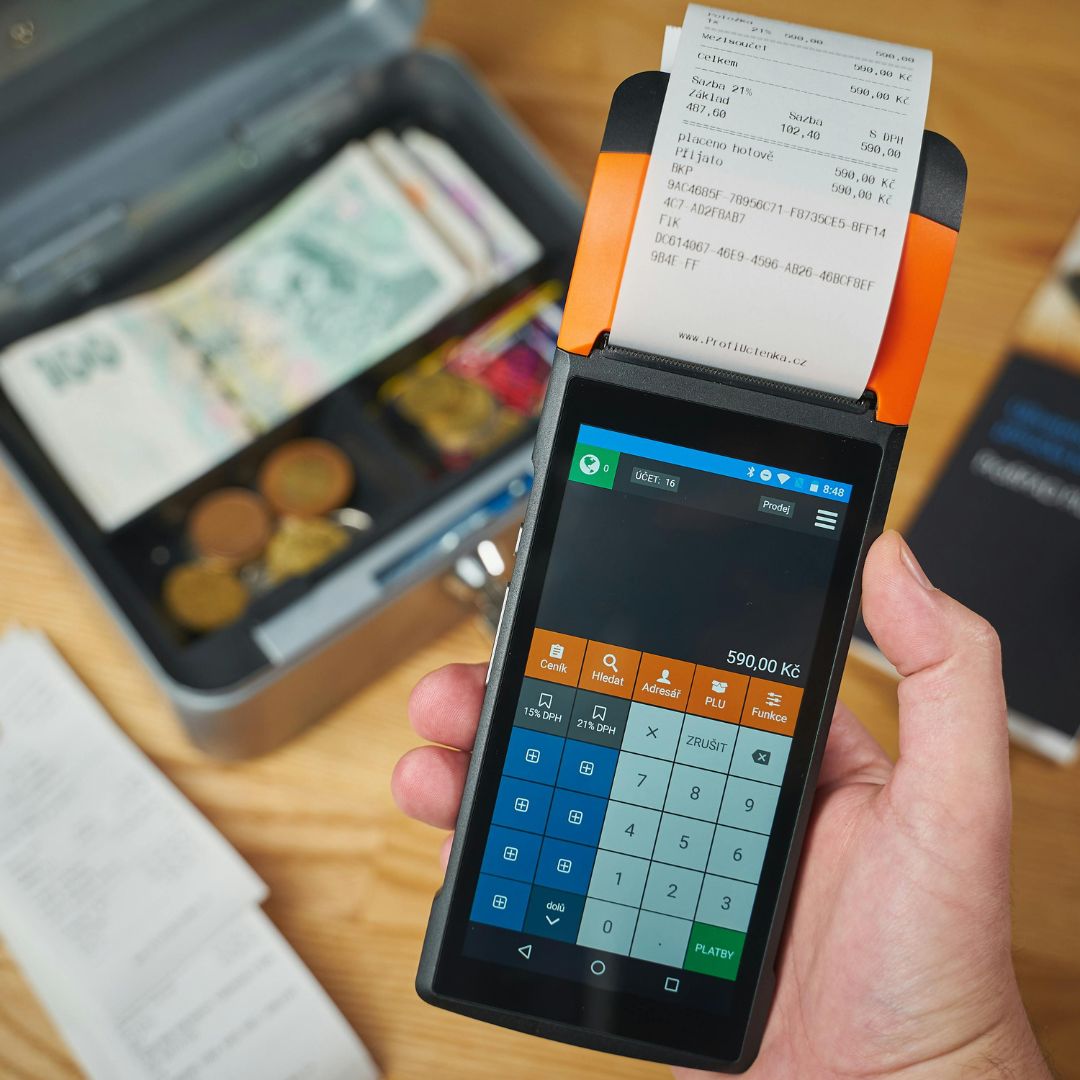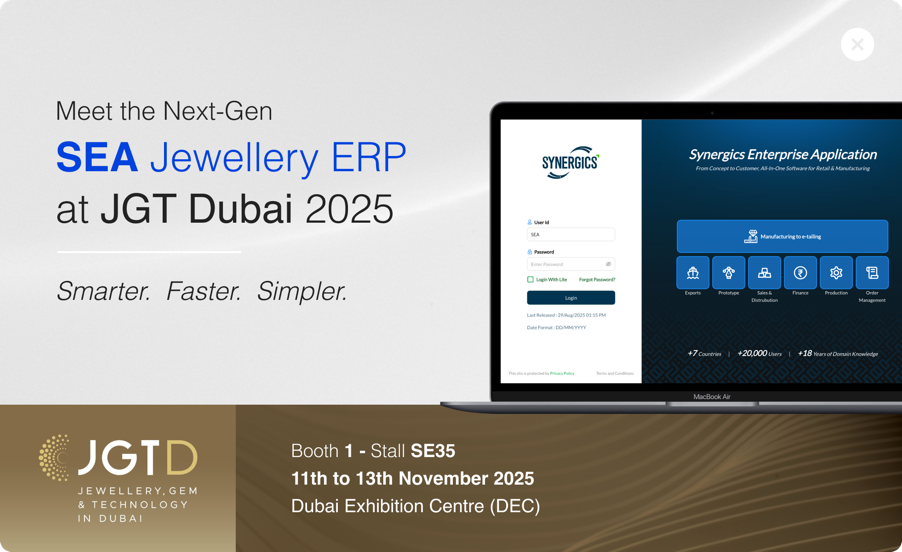Introduction
The jewellery retail industry is in the midst of a digital transformation. Once reliant on paper-based methods and standalone software, jewellers are now turning to integrated, cloud-based systems that can streamline operations, provide deep business insights, and enhance customer experiences. In this transformation, a major decision lies ahead for many retailers: Should they continue using traditional POS software or transition to a comprehensive ERP (Enterprise Resource Planning) solution?
This blog delves deep into the ongoing debate of ERP vs POS jewellery software and highlights the broader implications of choosing traditional software vs ERP in the jewellery retail landscape. Through feature comparisons, real-world scenarios, and long-term benefit analyses, we’ll uncover which system truly supports business scalability, accuracy, and profitability in a modern retail environment.
Additionally, we will explore the role of advanced jewellery software, specially designed for retail and manufacturing, and how it helps retailers stay competitive in a dynamic market.
Understanding the Basics

Traditional POS Software in Jewellery Retail
Traditional POS (Point of Sale) software is typically designed to handle sales transactions, manage inventory at a basic level, and generate simple reports. It is localized, often installed on in-store computers, and lacks integration with other business departments such as finance, CRM, or supply chain.
Key Features:
- Transaction processing
- Invoice printing
- Barcode scanning
- Basic customer data capture
- Limited reporting
However, POS systems are often siloed, lacking connectivity to other functions such as manufacturing, supply chain, or customer service. They are effective for small-scale operations but pose challenges for growing businesses.
ERP in Jewellery Retail
ERP is a comprehensive solution that integrates all core functions of a jewellery business into one system. ERP systems connect front-end retail with back-end processes like inventory management, customer relationship management (CRM), finance, repairs, custom orders, and even manufacturing.
Key Features:
- Real-time inventory and stock visibility
- Integrated CRM and marketing tools
- Financial accounting and GST compliance
- Manufacturing module integration
- Multi-store management
An ERP system is ideal for businesses aiming for scalability, accuracy, and streamlined operations across various departments.
ERP vs POS Jewellery: Feature-by-Feature Comparison
1. Inventory Management
POS Systems:
- Track products with SKU or barcode
- Limited multi-location tracking
- No detailed karat or weight tracking
ERP Systems:
- Manage karat-wise, weight-based inventory
- Real-time tracking across stores and warehouses
- Categorization by design, collection, purity, and making charges
- Auto reordering based on minimum stock levels
Conclusion: Jewellery inventory is complex and needs more than just quantity tracking. ERP provides advanced stock management capabilities that traditional POS systems can’t match.
2. Billing and Invoicing
POS Systems:
- Supports billing and cash management
- Limited custom order handling
- Generic invoice formats
ERP Systems:
- Integrated quotation-to-invoice workflows
- Supports partial payments, advances, and credit sales
- Customizable invoices with branding and compliance fields
- Consolidated billing for multi-product purchases
Conclusion: ERP offers better billing flexibility and control, essential for high-ticket purchases in jewellery.
3. Customer Relationship Management (CRM)
POS Systems:
- Store basic customer information
- No segmentation or behavior tracking
ERP Systems:
- Detailed CRM module with lifecycle tracking
- Customer segmentation by spend, frequency, and preferences
- Automated SMS, email, and WhatsApp notifications
- Loyalty points and referral programs
Conclusion: ERP systems help improve customer engagement and retention with powerful CRM tools.
4. Multi-Branch & Warehouse Management
POS Systems:
- Separate databases per branch
- Manual data collation for reporting
ERP Systems:
- Centralized control with branch-wise dashboards
- Stock transfers, performance tracking, and centralized purchase management
Conclusion: Multi-location businesses benefit immensely from ERP’s unified control system.
5. Repairs, Alterations & Custom Orders
POS Systems:
- Manual tracking or separate software required
ERP Systems:
- Tracks repair tickets with status updates
- Alerts for due dates and pick-up reminders
- Custom order tracking from inquiry to delivery
ERP ensures transparency and accountability in high-value service-based interactions.
Additionally, for retailers who manage in-house workshops or partner with goldsmiths, Jewellery Manufacturing software is integrated within ERP to streamline design-to-delivery workflows.
6. Accounting and Compliance
POS Systems:
- Often relies on third-party software like Tally
- Manual entry of sales and purchase data
ERP Systems:
- Built-in accounting and ledger management
- GST-compliant invoicing and reporting
- Real-time balance sheets, P&L, and cash flow
- Automated bank reconciliation
Conclusion: With real-time accounting and compliance features, ERP reduces the need for external software and ensures accuracy.
7. Analytics and Reporting
POS Systems:
- Offers basic daily and monthly sales reports
- Limited insights
ERP Systems:
- Advanced dashboards for sales, purchase, stock, and customer behavior
- Predictive analytics and demand forecasting
- Exportable and customizable reports for management
Conclusion: Decision-makers gain strategic advantage with ERP’s advanced reporting tools.
8. Scalability and Growth
POS Systems:
- Limited to single-store or small-scale operations
- Scaling involves manual setup for each location
ERP Systems:
- Seamless expansion to multiple branches, eCommerce, and franchises
- Cloud or on-premise options
Conclusion: ERP is built for growth, allowing businesses to expand without technological limitations.
Real-World Scenario: ERP vs Traditional Software in Jewellery Retail
Meet “Sparkle Gems,” a growing jewellery retail brand with three outlets and a small manufacturing unit.
Using POS Software:
- Each store manages its sales separately
- Head office consolidates data weekly
- No real-time stock transfer or purchase visibility
- Custom orders tracked manually
- Accounting handled via third-party tools
Using ERP:
- All branches connected to a central dashboard
- Real-time stock visibility and transfers
- Quotation-to-invoice flow for custom orders
- Integrated accounts and automated GST returns
- Loyalty programs and customer engagement campaigns
The shift from POS to ERP transformed operations and improved profit margins by reducing leakages, increasing efficiency, and enabling data-driven decisions.
Why Traditional Software is Not Enough Today
Traditional POS software was designed for transactional efficiency — but modern jewellery retail demands more:
- Customer personalization
- E-commerce integration
- Compliance tracking
- Vendor collaboration
- Data security
Retailers need software that not only sells but manages and grows the business. Retail jewellery software that combines POS with ERP capabilities is becoming the new standard.
Cost Consideration: ERP vs Traditional Software
While ERP implementation has a higher initial cost, the long-term benefits include:
- Lower dependency on manual labor
- Improved customer retention
- Time-saving through automation
- Reduced pilferage and errors
- Real-time decision-making
When calculating ROI, ERP consistently outperforms traditional software within 12-24 months of implementation.
Security, Backup, and Data Integrity
POS Systems:
- Local storage; risk of data loss
- Manual backup processes
ERP Systems:
- Cloud storage with automatic backups
- Encryption, role-based access, and activity logs
Conclusion: Data is the new gold in retail. ERP offers enterprise-level protection, which is critical in high-value industries.
Integration with eCommerce and Online Platforms
POS Systems:
- Requires plugins or separate connectors
- Risk of data sync issues
ERP Systems:
- Native eCommerce integrations
- Unified inventory and order tracking for online and offline
Conclusion: ERP helps retailers future-proof their business through omnichannel capabilities.
Conclusion: Making the Right Choice
| Criteria | Traditional POS Software | ERP Software |
|---|---|---|
| Inventory Management | Basic | Detailed & real-time |
| Billing Flexibility | Limited | High |
| CRM | Minimal | Advanced & integrated |
| Custom Order Tracking | Manual | Automated |
| Accounting | External tools | Built-in |
| Multi-branch | Complex | Seamless |
| Reporting | Basic | Advanced |
| eCommerce Integration | External | Native |
| Scalability | Limited | High |
| ROI | Moderate | High over time |
For small-scale businesses, POS systems offer simplicity. However, for businesses aiming for growth, reputation, and operational excellence, ERP is the clear winner.
As the jewellery industry evolves, technology will play a decisive role in who thrives and who lags. Choosing between traditional software vs ERP is no longer just an IT decision — it’s a strategic move toward future-readiness.











